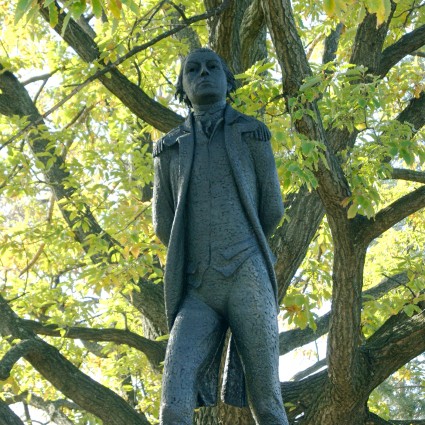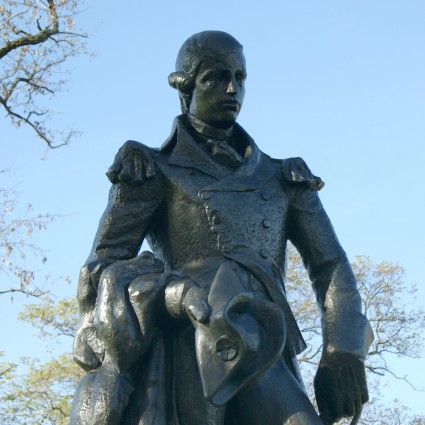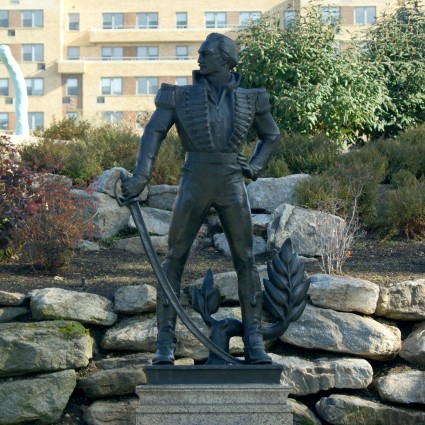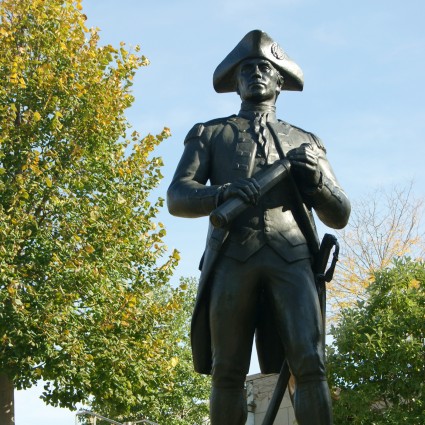At A Glance
Commissioned as part of the William M. Reilly Memorial
von Steuben was a Prussian military expert who joined American forces as inspector general in 1778
He led his own command in the siege of Yorktown and later retired to upstate New York
Artist Warren Wheelock taught himself sculpture after an early career as a commercial artist and teacher
Wheeler also created sculptures of Lincoln, Washington, Walt Whitman, and Babe Ruth
A Prussian military expert, Friedrich von Steuben joined the American forces as inspector general in 1778. After helping to instill discipline and professionalism in the troops at Valley Forge, von Steuben led his own command in the siege of Yorktown. Unlike General Montgomery and Pulaski, he survived the war and, on a congressional pension, lived the rest of his life in upstate New York. Artist Warren Wheelock, a volunteer in the Spanish-American War, taught himself sculpture after an early career as a commercial artist and teacher. By the time of his commission for the William M. Reilly Memorial, he had created sculptures of Lincoln, Washington, Walt Whitman, and Babe Ruth.
William M. Reilly Memorial
In his will of 1890, General William M. Reilly of the Pennsylvania National Guard established a trust fund for the purpose of creating monuments to Revolutionary War heroes. The earnings were to accumulate until the fund became large enough for the memorial to be realized. In 1938, when the fund reached the necessary level, the trustees set the project in motion, and four bronze statues were installed by 1947. Although Reilly had requested a site near Independence Hall, the larger-than-life figures were placed instead on the terrace northwest of the Art Museum. C. Louis Borie, Jr., one of the architects of the museum itself, designed the granite bases.
As specified in the will, these first four sculptures commemorated Montgomery, Pulaski, von Steuben, and Lafayette, volunteers from other lands who “threw themselves into the cause of emancipating the colonies from the yoke of British tyranny.” In addition to honoring their achievements, General Reilly wrote, the memorial would express “appreciation and gratitude to the lands which gave these liberty-loving men their birth.”
By the terms of the will, funds remaining after the erection of the four original monuments were to be applied to other statues of Revolutionary heroes. Accordingly the trustees commissioned bronze figures of John Paul Jones and Nathanael Greene, which were installed in 1957 and 1961, respectively. The six sculptures are arranged in two facing rows.
Adapted from Public Art in Philadelphia by Penny Balkin Bach (Temple University Press, Philadelphia, 1992).
RESOURCES:



